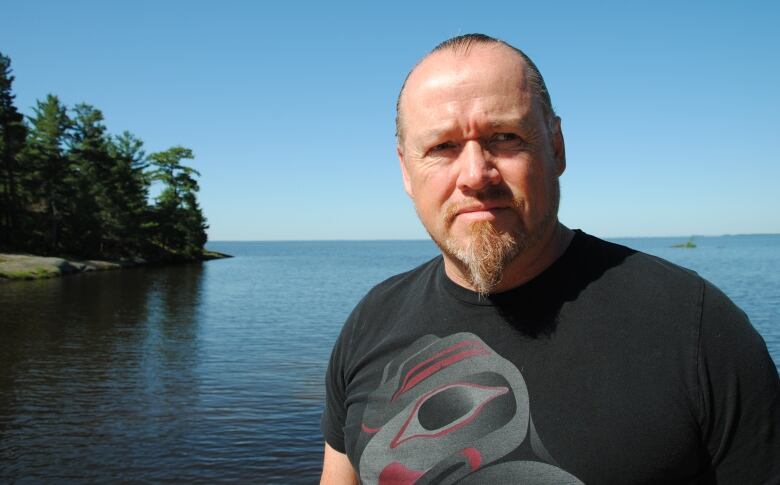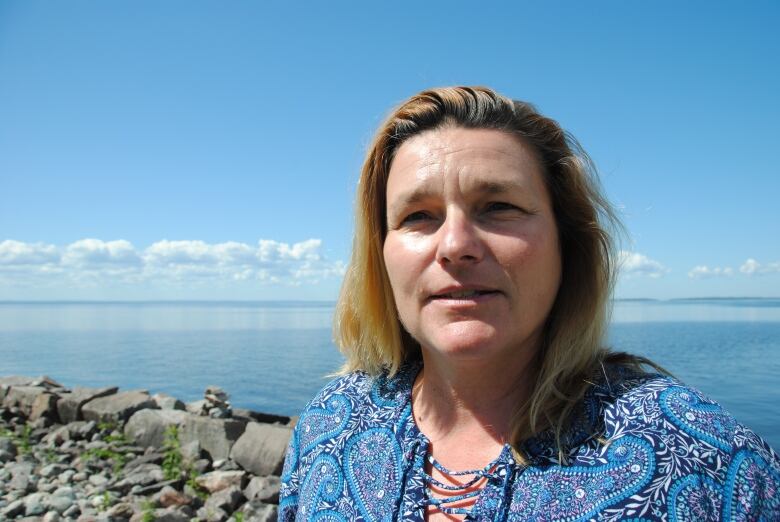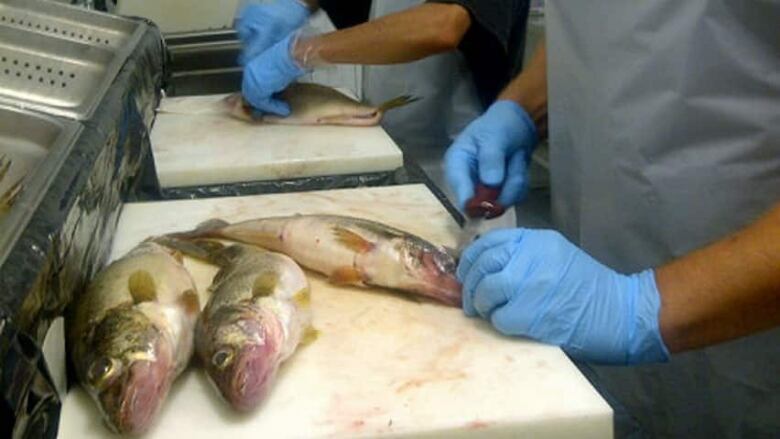'We both want a healthy lake,' tensions ease over Lake Nipissing fishing
Agreement between province and First Nation set to expire in 2025

Fishing season on Lake Nipissing has been a lot quieter in recent summersand many credit an agreement between the province and the First Nation that is been in place for almost a decade.
Dwindling numbers of pickerel, also called walleye, led some to blame Indigenous commercial fishing, while others pointed the finger at tourist lodges.
So-called "ghost nets" full of dead fish also fuelled anger, while restrictions on non-Indigenous anglers seemed to get tighter.
"But you don't see that happening as frequently anymore," said Samantha Simpkin, owner of the Fish Bay Marina on Callander Bay, who was once head of a Nipissing stakeholder's association.
She credits the memorandum of understanding signed between the Ontario Ministry of Natural Resources and Nipissing First Nation.
Chief Scott McLeod, who used to work in fisheries management for the ministry, says not everyone thought it was a smart move at first, as many saw the provincial government as infringing on his community's centuries-long management of the lake.

But the agreementhas seen the two governments work together to enforce each other's rules, which in Nipissing includes catch limits and seasons for commercial fishing, as well as restrictions on subsistence fishing by community members.
"The fishermen themselves, as well as the community has seen the benefit of increased walleye in the lake with these rules in place, which ultimately makes the fishing better for even the commercial fishermen," said McLeod.
"We both want a healthy lake. The politics will always be there."
He says the First Nation has moved to suddenly shut down commercial fishing based on how much is caught, while the Ontario government system is not a nimble and doesn't keep firm track of how many walleye are being taken out of the lake by non-Indigenous anglers.
"It's not in bad shape, but there's always stresses on the lake," said McLeod, who says the population is still short on "mature spawners," so he's happy to see the province still enforcing a 40-45cm slot size and limiting anglers to two keepers.
"Ithink that that's really working for the lake, just as a tourist operator, I think the fishing has really improved," said Simpkin.

The population has been helped out by some 2 million pickerel eggs put into the lake every year by a group of tourist outfitters, including Shawn Degagne.
The owner of Bear Creek Cottages, who also works as a fishing guide, says customers have been returning in recent years.
"Lots of guys are up here just to catch fish and have fun, right?" said Degagne.
"We've definitely lost the guys who like to come and fill their freezer. We've definitely lost some customers over the slot size, but lots of them keep coming back."
He's hoping the day will come when the daily catch limit is raised up to three, but for now he's happy to see the lake be more healthy and peaceful than in years past.

In a statement, the Ontario Ministry of Natural Resources says the Nipissing walleye are recovering, but slot sizes and catch limits for non-Indigenous anglers are still needed to protect the population.
The ministry says that working with the First Nation through the memorandum of understanding, which is set to expire next year, has been "integral" for the recovery of pickerel in the lake.
It also notes that over 200 charges have been laid in the last three years for fishing violations on Nipissing.
"If all stakeholders continue to work towards thelong-term sustainable management of Lake Nipissing's fishery, the future for the Lake Nipissing walleye looks good," the statement reads.












_(720p).jpg)


 OFFICIAL HD MUSIC VIDEO.jpg)
.jpg)



























































































